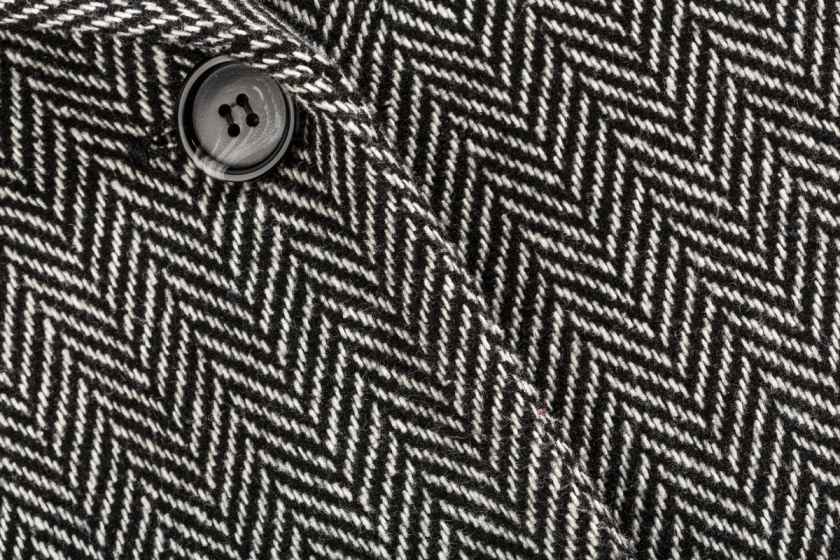A Brief Guide on Twill Fabric: Here’s What Brands and Manufacturers Should Know



| Fabric name | Twill |
| Fabric composition | Organic or synthetic fibers |
| Fabric breathability | Medium |
| Major Exporters | China |
| Uses | Jeans, slacks, shirts, bedding |
Origin
TwillI fabric is a specific type of weave that occurs in a diagonal pattern. The word ‘twill’ is a contemporary variant of the Old English word ‘twili,’ which is a partial adoption of the Latin word "bilix."
Twill is known for its superior draping quality. This is possible because of its unique weaving pattern. Twill is most notably used in the making of denim jeans. Denim apparel has distinctly visible diagonal lines because of the twill weaved into them.

Twill is also a versatile fabric. It is available in different colors, thread counts and styles. Because of the many ways to weave twill, there are several types of twill fabrics available. See ‘Types’ section for a table of twill types.
Brands shopping for twill fabrics on the market may get confused by the various types of twill. Each twill type is, to make matters worse, structurally distinct from the other. The solution is to look at the fabric in question. Regardless of production method, the final fabric is called ‘twill’ as long as diagonal lines can be seen upon it.
Production
The production process for twill fabric is as follows:
- Production Of Monomer Alcohol: Ethylene is mixed with dimethyl terephthalate at high temperatures to produce monomer alcohol.
- Production Of Polyester: The monomer alcohol is mixed with terephthalic acid to give rise to the polymer known as polyester.
- Extrusion: The molten substance is then extruded through a slot and allowed to cool into long ribbons.
- Chipping: The ribbons are chipped and are melted again.
- Spinning: This molten substance is extruded with a spinneret.
- Drawing: The resulting strands of textile fiber are allowed to cool before they are stretched.
- Finishing: The polyester fibers are dyed or subjected to flame retardant or antistatic aids.
- Weaving: After the raw textile fiber is produced, twill material is woven by passing the weft yarn over one or more warp threads and then passing it below two or more warp threads.
Types
Some examples of the different types of twill weave are:
| Type | Description |
| Natural twill | Fabric is made from natural fibers like cotton. |
| Synthetic twill | Fabric is made from synthetic textiles like polyester. |
| Zigzag Twill | This is the most common type of twill. Its most distinct feature is the diagonal patterns visible on the weave. |
| Herringbone Twill | This type of twill is distinguished by its iconic zigzag pattern. The pattern is possible because of the weft and warp threads which are of different colours. |
| Diamond Twill | Diamond twill get its name from the diamond patterns visible on the fabric. This is because the fabric is composed of many concentric lines. The diamonds are woven end-to-end and parallel to each other upon the fabric. |
| Diaper twill | This type of twill displays a complex diamond-shaped pattern. It was originally used to make diapers. |
| Broken twill | This type of twill displays an alternating design. |
| Elongated twill | Elongated twill is woven by crossing many weft threads with a single weave thread. As such, this twill type has an elongated appearance. |
Importers/Exporters
China is the biggest producer of polyester and cotton. As these two fibers are typically used to make twill fabric, China is also the biggest exporter of twill. Other major producers of twill fabric are India, the United States, and Pakistan.
Uses
The most common use of twill fabric is the manufacture of denim jeans. It is also used to make polo shirts and jackets. Twill fabric can also be found in common household items like table cloths, curtains and bedsheets.
Environmental Impact
The environmental impact caused by twill fabric depends on the types of fibers used in its manufacture. Fibers derived from natural sources have less impact while synthetic fibers are more harmful.
Similarly, the methods used to make fabrics also have an impact on the environment. Production of cotton twill fabric is relatively sustainable whereas the production of synthetic materials (e.g., polyester) harms the environment.

Brands making twill weave products can use cotton (and other natural fibers) to ensure compliance and improve their environmental record. That said, cotton is not without its problems.
Unethical practices used to grow cotton can result in soil degradation. Certain fertilizers or pesticides used to grow cotton have toxic chemicals. These chemicals can seep into the water supply. To sum up, the production of cotton creates its own range of environmental issues.
These issues can be minimized by seeking cotton producers who only use organic and sustainable practices.
Polyester, a synthetic fiber used to make twill, has a much larger environmental impact. As it’s synthetic, polyester is not biodegradable. The manufacturing process for polyester also hurts the environment.
Polyester is made from petroleum. Petroleum is a non-renewable resource: a number of toxic chemicals are used to extract usable polymers from it. To sum up, there is no way to avoid pollution caused by the production of polyester. Still, innovative production processes can play the role of a positive mitigating factor.
Wrapping Up
Are you looking to partner with suppliers of sustainable fabrics? Sign up with Fashinza and get in touch with our team. Our technology-driven platform analyzes your manufacturing needs and connects you with the right collaborators in the industry. To know more, talk to us at Fashinza!



















